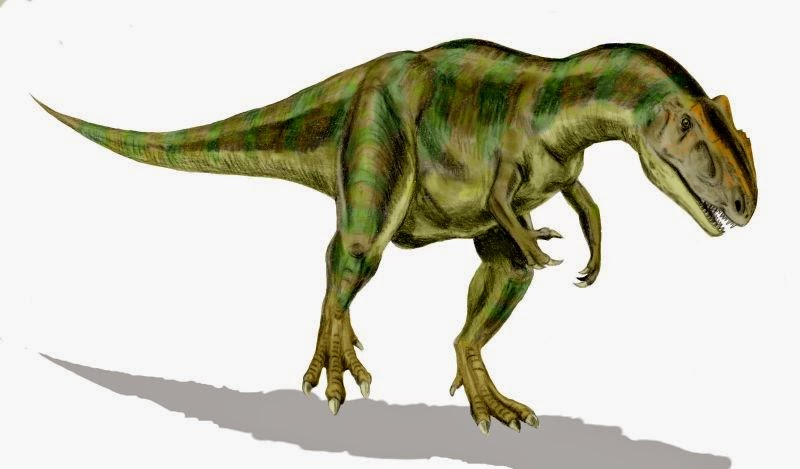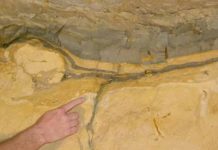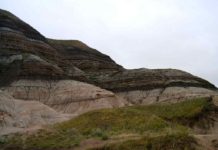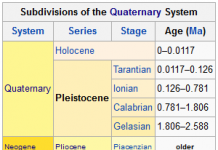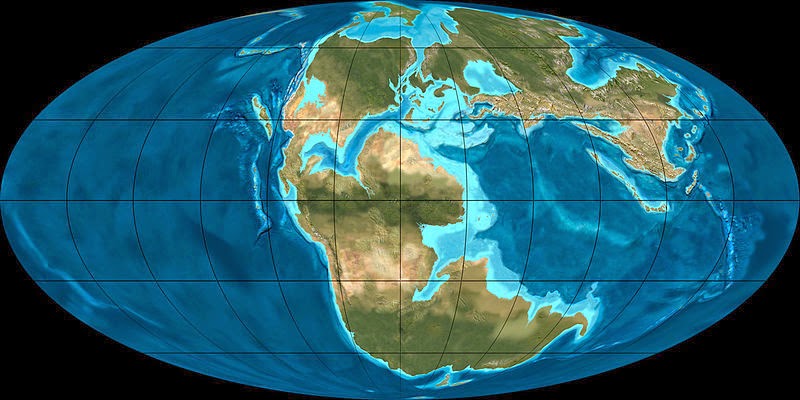
The Jurassic is a geologic period and system that extends from 201.3± 0.6 Ma (million years ago) to 145± 4 Ma; from the end of the Triassic to the beginning of the Cretaceous. The Jurassic constitutes the middle period of the Mesozoic Era, also known as the Age of Reptiles. The start of the period is marked by the major Triassic–Jurassic extinction event. Two other extinction events occurred during the period: the Late Piensbachian/Early Toarcian event in the Early Jurassic, and the Late Tithonian event at the end; however, neither event ranks among the ‘Big Five’ mass extinctions. The Jurassic is named after the Jura Mountains within the European Alps, where limestone strata from the period was first identified.
By the beginning of the Jurassic, the supercontinent Pangaea had begun rifting into two landmasses, Laurasia to the north and Gondwana to the south. This created more coastlines and shifted the continental climate from dry to humid, and many of the arid deserts of the Triassic were replaced by lush rainforests. On land, the fauna transitioned from the Triassic fauna, dominated by both dinosauromorph and crocodylomorph archosaurs, to one dominated by dinosaurs alone. The first birds also appeared during the Jurassic, having evolved from a branch of theropod dinosaurs. Other major events include the appearance of the earliest lizards, and the evolution of therian mammals, including primitive placentals. Crocodylians made the transition from a terrestrial to an aquatic mode of life. The oceans were inhabited by marine reptiles such as ichthyosaurs and plesiosaurs, while pterosaurs were the dominant flying vertebrates.
Etymology
The chronostratigraphic term “Jurassic” is directly linked to the Jura Mountains. Alexander von Humboldt recognized the mainly limestone dominated mountain range of the Jura Mountains as a separate formation that had not been included in the established stratigraphic system defined by Abraham Gottlob Werner, and he named it “Jurakalk” in 1795. The name “Jura” is derived from the Celtic root “jor”, which was Latinised into “juria”, meaning forest (i.e. “Jura” is forest mountains).
Divisions
The Jurassic period is divided into the Early Jurassic, Middle, and Late Jurassic epochs. The Jurassic System, in stratigraphy, is divided into the Lower Jurassic, Middle, and Upper Jurassic series of rock formations, also known as Lias, Dogger and Malm in Europe. The separation of the term Jurassic into three sections goes back to Leopold von Buch. The faunal stages from youngest to oldest are:
- Upper/Late Jurassic
- Tithonian (152.1 ± 4 – 145 ± 4 Mya)
- Kimmeridgian (157.3 ± 4 – 152.1 ± 4 Mya)
- Oxfordian (163.5 ± 4 – 157.3 ± 4 Mya)
- Middle Jurassic
- Callovian (166.1 ± 4 – 163.5 ± 4 Mya)
- Bathonian (168.3 ± 3.5 – 166.1 ± 4 Mya)
- Bajocian (170.3 ± 3 – 168.3 ± 3.5 Mya)
- Aalenian (174.1 ± 2 – 170.3 ± 3 Mya)
- Lower/Early Jurassic
- Toarcian (182.7 ± 1.5 – 174.1 ± 2 Mya)
- Pliensbachian (190.8 ± 1.5 – 182.7 ± 1.5 Mya)
- Sinemurian (199.3 ± 1 – 190.8 ± 1.5 Mya)
- Hettangian (201.3 ± 0.6 – 199.3 ± 1 Mya)
Paleogeography and tectonics
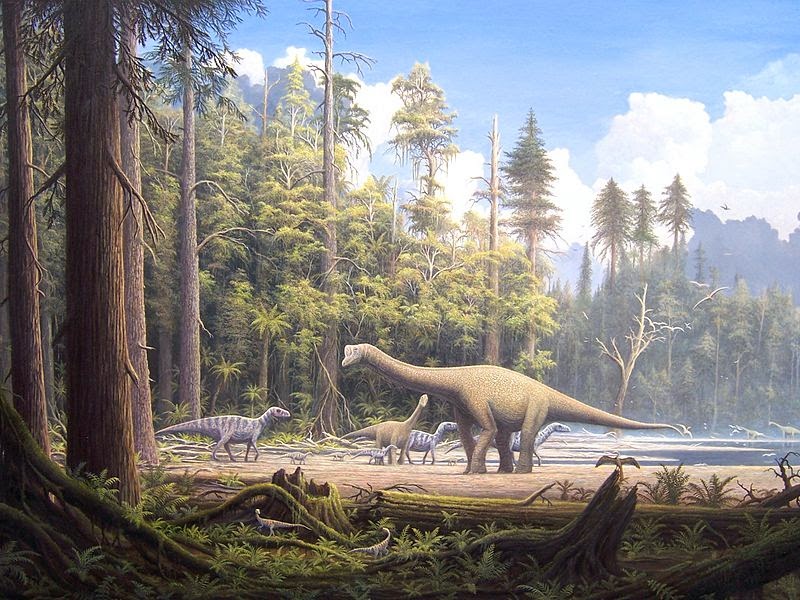
During the early Jurassic period, the supercontinent Pangaea broke up into the northern supercontinent Laurasia and the southern supercontinent Gondwana; the Gulf of Mexico opened in the new rift between North America and what is now Mexico’s Yucatan Peninsula. The Jurassic North Atlantic Ocean was relatively narrow, while the South Atlantic did not open until the following Cretaceous period, when Gondwana itself rifted apart. The Tethys Sea closed, and the Neotethys basin appeared. Climates were warm, with no evidence of glaciation. As in the Triassic, there was apparently no land near either pole, and no extensive ice caps existed.
The Jurassic geological record is good in western Europe, where extensive marine sequences indicate a time when much of the continent was submerged under shallow tropical seas; famous locales include the Jurassic Coast World Heritage Site and the renowned late Jurassic lagerstätten of Holzmaden and Solnhofen. In contrast, the North American Jurassic record is the poorest of the Mesozoic, with few outcrops at the surface. Though the epicontinental Sundance Sea left marine deposits in parts of the northern plains of the United States and Canada during the late Jurassic, most exposed sediments from this period are continental, such as the alluvial deposits of the Morrison Formation.
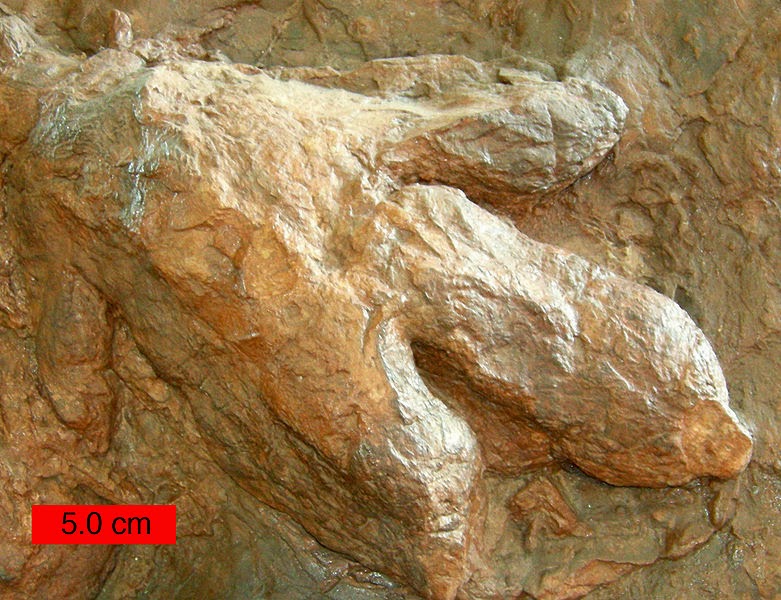
The Jurassic was a time of calcite sea geochemistry in which low-magnesium calcite was the primary inorganic marine precipitate of calcium carbonate. Carbonate hardgrounds were thus very common, along with calcitic ooids, calcitic cements, and invertebrate faunas with dominantly calcitic skeletons (Stanley and Hardie, 1998, 1999).
The first of several massive batholiths were emplaced in the northern Cordillera beginning in the mid-Jurassic, marking the Nevadan orogeny. Important Jurassic exposures are also found in Russia, India, South America, Japan, Australasia and the United Kingdom.
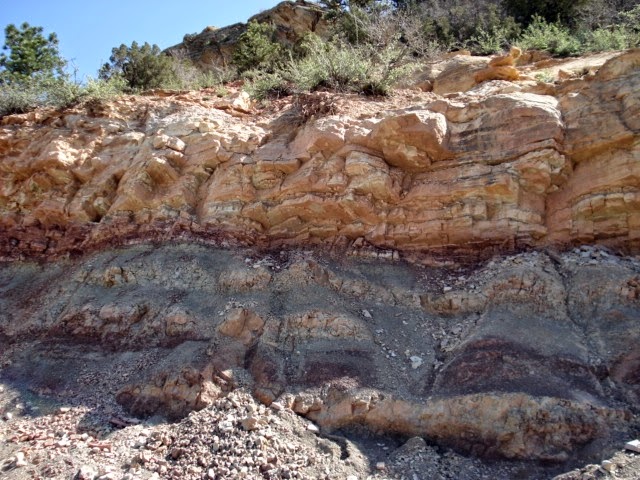
In Africa, Early Jurassic strata are distributed in a similar fashion to Late Triassic beds, with more common outcrops in the south and less common fossil beds which are predominated by tracks to the north. As the Jurassic proceeded, larger and more iconic groups of dinosaurs like sauropods and ornithopods proliferated in Africa. Middle Jurassic strata are neither well represented nor well studied in Africa. Late Jurassic strata are also poorly represented apart from the spectacular Tendeguru fauna in Tanzania. The Late Jurassic life of Tendeguru is very similar to that found in western North America’s Morrison Formation.
Fauna
Aquatic and marine
During the Jurassic period, the primary vertebrates living in the sea were fish and marine reptiles. The latter include ichthyosaurs, who were at the peak of their diversity, plesiosaurs, pliosaurs, and marine crocodiles of the families Teleosauridae and Metriorhynchidae. Numerous turtles could be found in lakes and rivers.
In the invertebrate world, several new groups appeared, including rudists (a reef-forming variety of bivalves) and belemnites. Calcareous sabellids (Glomerula) appeared in the Early Jurassic. The Jurassic also had diverse encrusting and boring (sclerobiont) communities, and it saw a significant rise in the bioerosion of carbonate shells and hardgrounds. Especially common is the ichnogenus (trace fossil) Gastrochaenolites.
During the Jurassic period, about four or five of the twelve clades of planktonic organisms that exist in the fossil record either experienced a massive evolutionary radiation or appeared for the first time.
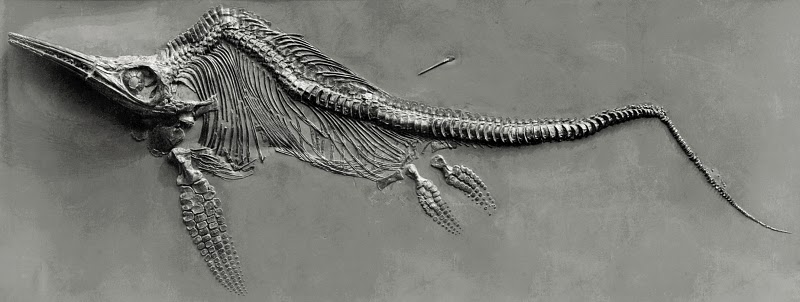
Terrestrial
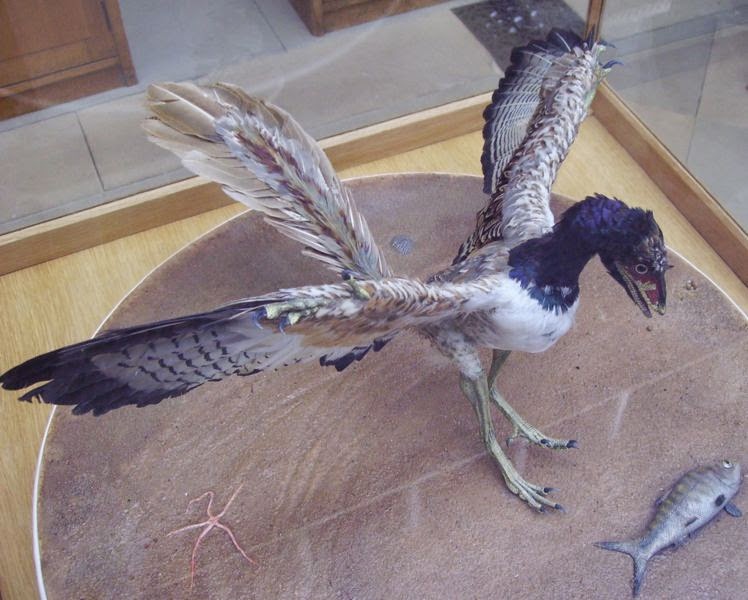
On land, large archosaurian reptiles remained dominant. The Jurassic was a golden age for the large herbivorous dinosaurs known as the sauropods—Camarasaurus, Apatosaurus, Diplodocus, Brachiosaurus, and many others—that roamed the land late in the period; their mainstays were either the prairies of ferns, palm-like cycads and bennettitales, or the higher coniferous growth, according to their adaptations. They
were preyed upon by large theropods, such as Ceratosaurus, Megalosaurus, Torvosaurus and Allosaurus. All these belong to the ‘lizard hipped’ or saurischian branch of the dinosaurs. During the Late Jurassic, the first Avialans, like Archaeopteryx, evolved from small coelurosaurian dinosaurs. Ornithischian dinosaurs were less predominant than saurischian dinosaurs, although some, like stegosaurs and small ornithopods, played important roles as small and medium-to-large (but not sauropod-sized) herbivores. In the air, pterosaurs were common; they ruled the skies, filling many ecological roles now taken by birds. Within the undergrowth were various types of early mammals, as well as tritylodonts, lizard-like sphenodonts, and early lissamphibians.
The rest of the Lissamphibia evolved in this period, introducing the first salamanders and caecilians.
Flora
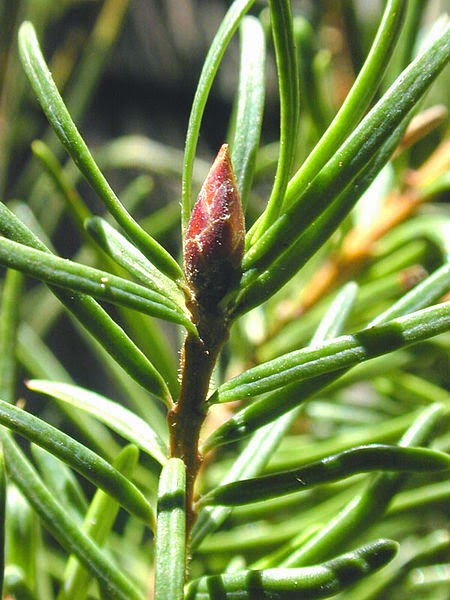
The arid, continental conditions characteristic of the Triassic steadily eased during the Jurassic period, especially at higher latitudes; the warm, humid climate allowed lush jungles to cover much of the landscape. Gymnosperms were relatively diverse during the Jurassic period. The Conifers in particular dominated the flora, as during the Triassic; they were the most diverse group and constituted the majority of large trees.
Extant conifer families that flourished during the Jurassic included the Araucariaceae, Cephalotaxaceae, Pinaceae, Podocarpaceae, Taxaceae and Taxodiaceae. The extinct Mesozoic conifer family Cheirolepidiaceae dominated low latitude vegetation, as did the shrubby Bennettitales. Cycads were also common, as were ginkgos and Dicksoniaceous tree ferns in the forest. Smaller ferns were probably the dominant undergrowth. Caytoniaceous seed ferns were another group of important plants during this time and are thought to have been shrub to small-tree sized. Ginkgo plants were particularly common in the mid- to high northern latitudes. In the Southern Hemisphere, podocarps were especially successful, while Ginkgos and Czekanowskiales were rare.
In the oceans, modern coralline algae appeared for the first time.
Note : The above story is based on materials provided by Wikipedia


